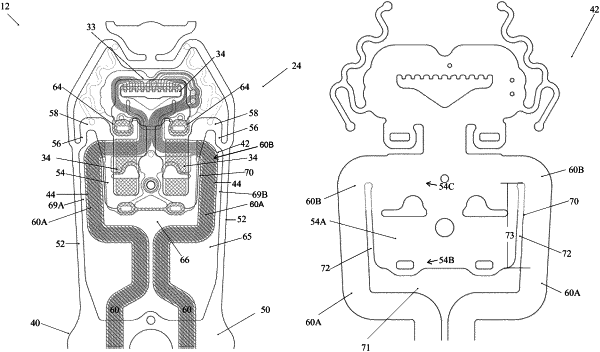| CPC G11B 5/4833 (2013.01) [G11B 5/486 (2013.01)] | 17 Claims |

|
1. A suspension comprising:
a flexure including a gimbal, a proximal end, and a distal end, the flexure having a longitudinal axis extending from the proximal end to the distal end, the gimbal includes a spring metal layer having a base portion, a tongue, and a pair of spring arms extending from the base portion to the tongue, a dielectric layer overlaying the spring metal layer and a conductive metal layer overlying the dielectric layer, the conductive metal layer including a first plurality of traces extending from the base portion to the tongue and a second plurality of traces extending from the base portion to the tongue;
a void formed in the spring metal layer between the tongue and the base portion and partially surrounding the tongue, the void includes a central opening with opposing ends, first and second channels extending from the opposing ends of the central opening, a portion of the first plurality of traces and a portion of the second plurality of traces are coupled over the void between the tongue and the base portion and extend towards the tongue, wherein the dielectric layer includes a tongue portion, trace portions, and an aperture aligned with the void and defined by the tongue portion and the trace portions,
the tongue portion includes a proximate end and a distal end, the trace portions extending from the distal end of the tongue portion, and
the aperture includes an elongated opening with opposing ends partially aligning with the central opening of the void, a first slit and a second slit extending from the opposing ends of the elongated opening, and
the first plurality of traces and the second plurality of traces extend from the base portion and converge toward one another over the void, and wherein the first plurality of traces and the second plurality of traces are coupled via a bridge.
|